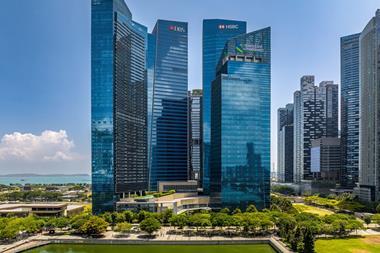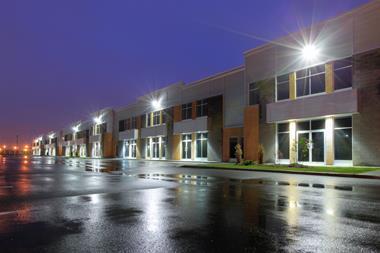Investors in US real estate should keep a watchful eye on their use of leverage and the potential for a bubble, according to a sentiment survey by PwC and the Urban Land Institute.
Respondents to the annual Emerging Trends in Real Estate report highlighted the risk of excessive optimism. “Easing of standards” in the debt markets could increase in 2015, the report said, with 42.1% of respondents expecting this to happen.
“This is happening at a moment when mortgage spreads are already tight, and US treasury rates will inevitably rise,” the report said.
PwC/ULI said some of the 1,055 US real estate professionals it surveyed asked whether real estate will “soon forget the hard-learned lessons of the recent past”.
“Such prophets of caution are worth listening to,” the report said. “Upcycles breed optimism, but excessive optimism can promote recklessness. However, in most cycles, overbuilding and excess leverage would likely have already started building momentum by now.”
The industry, PwC/ULI added, appears to have learned lessons in self-regulation and self-correction.
Property investments are currently producing “attractive cash flow and total returns compared with those of other alternatives” for institutional investors, the report noted. The sector still offers “longer-run diversification advantages and inflation-hedging attributes”, making allocations alongside other financial vehicles logical.
Houston – one of the largest US secondary cities – was ranked top of this year’s survey of destinations to invest.
Some institutional investors are “going where they have never gone before”, the report said, including into secondary markets and niche property types.
Institutional players are, one respondent said, “climbing the ladder from core-only to higher-yielding assets, often in niche products like self-storage and senior housing, as well as to higher-risk opportunistic deals in hotels and development. This is a typical cycle, one we’ve seen again and again.”
Raising money, the respondent said, is not an issue, with the question being more about how to “police the money” and ability to find deals.
The report said that with the first years of capital recovery in US real estate passed, elements of “core” investment – such as class-A properties, gateway markets and assets with strong current income and staggered lease expirations on the rent roll – have been “thoroughly netted”.
“If you want more of those in your portfolio, you’ll pay dearly,” the report said. “These are the ‘priced for perfection’ properties, those where all the anticipated good news is already embedded in the price, undiscounted for potential downside risks.”
“Risk-on”, the report added, is “not necessarily inappropriate for institutions”.
“It is worth remembering that, in a weakening market, the most valuable attribute is a long-term lease, but in a strengthening market the most valuable attributes are vacant space to rent and expiring leases to renew,” the report said. “The movement of institutional capital into non-core property investment does not necessarily betray a loss of discipline.”
PwC/ULI said in the current environment, pension funds are “bound to be more hands-on”, with larger investors more likely to look for input into decision-making at “all points of the investment process”.
“We will see the ’give-me-your-capital-and-trust-me approach’ increasingly out of favour,” one respondent said.
Houston – one of the largest US secondary cities – was ranked top of this year’s survey of destinations to invest. The city’s links to the energy sector continue to attract investors, the report said. Institutional investors are particularly attracted to the city.
At the other end of the scale, Chicago is more of a ‘sell’ city, despite being the only Midwest location to make the survey’s top 20.
Interviewees expressed concern about the fiscal situation surrounding the city and strength of the local economy.
“One area where local participants may want some improvement is in the area of the public and private sectors working together to improve the local market,” the report noted.
Overall, the sustained performance of US commercial real estate is expected to continue next year, fuelled by improving fundamentals and “robust investor appetite” from both domestic and foreign investors.
“Unlike previous reports and previous cycles, we are seeing sustained growth,” said Mitch Roschelle, partner, US real estate advisory practice leader, PwC. “In the past several years, we reported that real estate market participants’ main fears revolved around the uncertainty with the economy.”
The ability of growing real estate markets to adapt to a series of mega-trends impacting society and the global economy is more of an issue now, Roschelle said, pointing to accelerating urbanisation, demographic shifts and the impact of technology.








